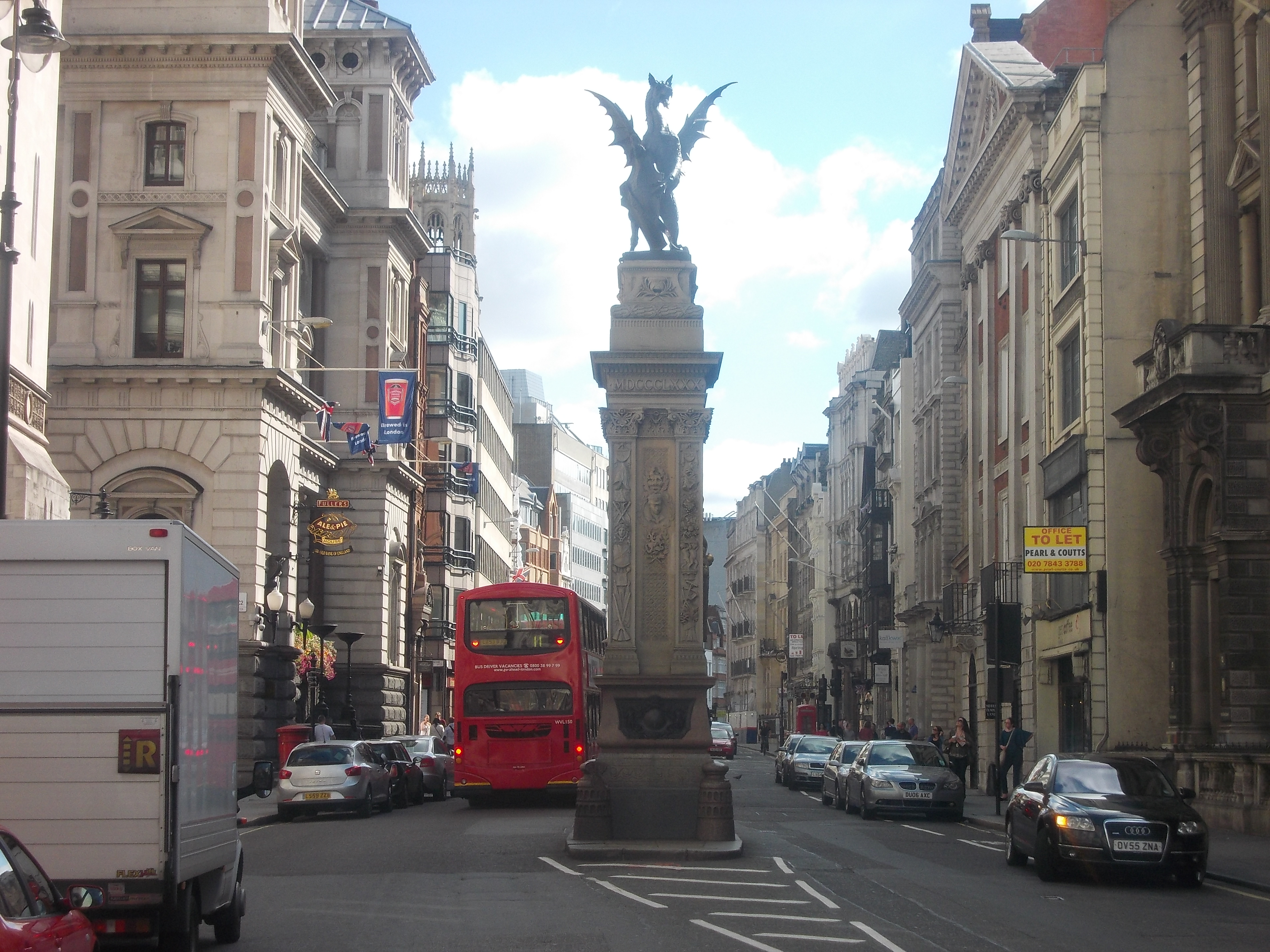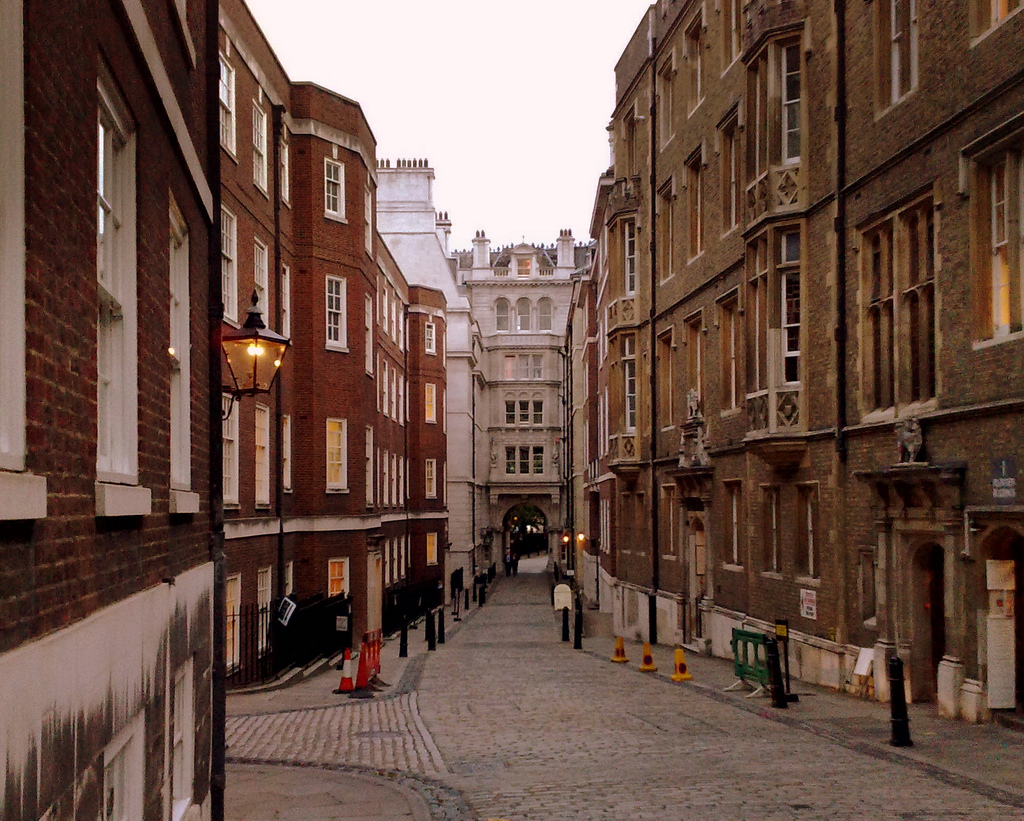|
Temple Bar, London
Temple Bar is a building that was until 1878 the principal ceremonial entrance to the City of London from the City of Westminster; since relocated, it is today the home of the Worshipful Company of Chartered Architects and an education centre focused on architecture and heritage in the City of London. In the middle ages, London expanded city jurisdiction beyond its walls to gates, called ‘bars’, which were erected across thoroughfares. To the west of the City of London, the bar was located in the area known as the Temple. Temple Bar was situated on the historic royal ceremonial route from the Tower of London to the Palace of Westminster, the two chief residences of the medieval English monarchs, and from the Palace of Westminster to St Paul's Cathedral. The road east of where Temple Bar once stood and within the City is Fleet Street, while the road to the west, in Westminster, is The Strand. The Corporation of the City of London formerly erected a barrier to regulate trade ... [...More Info...] [...Related Items...] OR: [Wikipedia] [Google] [Baidu] |
Temple Bar, 26 August 2012
A temple (from the Latin ) is a building reserved for spiritual rituals and activities such as prayer and sacrifice. Religions which erect temples include Christianity (whose temples are typically called church (building), churches), Hinduism (whose temples are called Mandir), Buddhism, Sikhism (whose temples are called Gurdwara, gurudwara), Jainism (whose temples are sometimes called derasar), Islam (whose temples are called mosques), Judaism (whose temples are called synagogues), Zoroastrianism (whose temples are sometimes called Agiary), the Baha'i Faith (which are often simply referred to as Baha'i House of Worship), Taoism (which are sometimes called Daoguan), Shinto (which are sometimes called Shinto shrine, Jinja), Confucianism (which are sometimes called the Temple of Confucius), and ancient religions such as the Ancient Egyptian religion and the Ancient Greek religion. The form and function of temples are thus very variable, though they are often considered by belie ... [...More Info...] [...Related Items...] OR: [Wikipedia] [Google] [Baidu] |
Inns Of Court
The Inns of Court in London are the professional associations for barristers in England and Wales. There are four Inns of Court – Gray's Inn, Lincoln's Inn, Inner Temple and Middle Temple. All barristers must belong to one of them. They have supervisory and disciplinary functions over their members. The Inns also provide libraries, dining facilities and professional accommodation. Each also has a church or chapel attached to it and is a self-contained precinct where barristers traditionally train and practise, although growth in the legal profession, together with a desire to practise from more modern accommodations and buildings with lower rents, caused many barristers' chambers to move outside the precincts of the Inns of Court in the late 20th century. History During the 12th and early 13th centuries, law was taught in the City of London, primarily by the clergy. But a papal bull in 1218 prohibited the clergy from practising in the secular courts (where the English common ... [...More Info...] [...Related Items...] OR: [Wikipedia] [Google] [Baidu] |
Knights Templar
, colors = White mantle with a red cross , colors_label = Attire , march = , mascot = Two knights riding a single horse , equipment = , equipment_label = , battles = The Crusades, including: , anniversaries = , decorations = , battle_honours = , commander1 = Hugues de Payens , commander1_label = First Grand Master , commander2 = Jacques de Molay , commander2_label = Last Grand Master , commander3 = , commander3_label = , notable_commanders = The Poor Fellow-Soldiers of Christ and of the Temple of Solomon ( la, Pauperes commilitones Christi Templique Salomonici), also known as the Order of Solomon's Temple, the Knights Templar, or simply the Templars, was ... [...More Info...] [...Related Items...] OR: [Wikipedia] [Google] [Baidu] |
The Temple (London)
The Temple is an area of London surrounding Temple Church. It is one of the main legal districts in London and a notable centre for English law, historically and in the present day. It consists of the Inner Temple and the Middle Temple, which are two of the four Inns of Court and act as local authorities in place of the City of London Corporation as to almost all structures and functions. The Royal Courts of Justice are just to the north and Temple tube station borders to the southwest in the City of Westminster. The associated area is roughly bounded by the River Thames (the Victoria Embankment) to the south, Surrey Street to the west, the Strand and Fleet Street to the north and Carmelite Street and Whitefriars Street to the east. The intervening Essex Street, two streets east of Surrey Street is the traditional western boundary, beyond which are affluent office/hotel and residential blocks, spread over large three street blocks which are closest to the station. Extent Templ ... [...More Info...] [...Related Items...] OR: [Wikipedia] [Google] [Baidu] |
Palace Of Westminster
The Palace of Westminster serves as the meeting place for both the House of Commons of the United Kingdom, House of Commons and the House of Lords, the two houses of the Parliament of the United Kingdom. Informally known as the Houses of Parliament, the Palace lies on the north bank of the River Thames in the City of Westminster, in central London, England. Its name, which derives from the neighbouring Westminster Abbey, may refer to several historic structures but most often: the ''Old Palace'', a England in the Middle Ages, medieval building-complex largely Burning of Parliament, destroyed by fire in 1834, or its replacement, the ''New Palace'' that stands today. The palace is owned by the Crown. Committees appointed by both houses manage the building and report to the Speaker of the House of Commons (United Kingdom), Speaker of the House of Commons and to the Lord Speaker. The first royal palace constructed on the site dated from the 11th century, and Westminster beca ... [...More Info...] [...Related Items...] OR: [Wikipedia] [Google] [Baidu] |



.jpg)